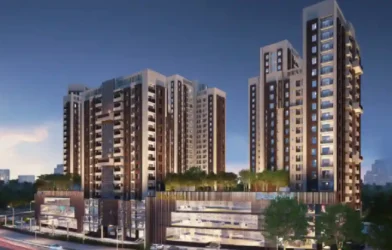Subtotal ₹0.00
A latest PropTiger report pointing to a substantial 26 % YoY decline in home sales during the festive December quarter last year and the overall deceleration in home sales in 2024 amidst high residential prices and elevated home loan rates, sends the alarm bells ringing .In the light of this, the FY26 budget needs to go beyond incremental changes to support the real estate sector to maintain its growth momentum.
Vinod Behl
This year’s budget needs to initiate several policy reforms and take transformative measures on both demand and supply front to keep the high growth momentum seen in the first half of last calendar year. Especially the budget is required to enhance affordability to boost homeownership..
Affordable housing is a key to achieve the goal of ‘Housing for All’. Considering that affordable housing saw a sharp decline in supply and demand in 2024, there is an urgent need to revive it by breathing new life into it through incentivised policy initiatives.Especially as currently there is a shortage of 10.1 million affordable houses which is likely to go up to 31.2 million by 2030.
In order to boost the supply of affordable housing, developers need to be provided greater access to cheaper finance alongside reviving 100% income tax holiday to them. As land acquisition and high land cost is a major hurdle , there is a need to unlock idle land of PSUs , besides making agricultural land available in designated zones to promote affordable housing. Reduction in GST on construction materials and bringing down compliance costs are other measures required to bolster affordable housing.
On the demand side, the budget needs to boost disposable income of prospective homebuyers through income tax relief. Further measures like increasing tax deduction limit on housing loans, revival of credit linked subsidy scheme for first time homebuyers under Pradhan Mantri Awas Yojana (PMAY),lowering GST on under-construction homes, rationalising stamp duties will help make homes more affordable to home seekers.
Infrastructure is a key to real estate growth. The budget should provide a capex push to physical and digital infrastructure, which in turn will boost both residential and commercial real estate. Improved connectivity will particularly help in the growth of Tier 2 and 3 cities. The budget should also incentivise the private sector besides promoting PPPs to push funding for infrastructure development.Policy measures are required to further spur Alternative Asset Classes which hold a lot of promise. Boosting manufacturing in line with ‘Make in India’ mission through greenfield industrial cities and by creating dedicated EV manufacturing corridors and augmenting EV charging infra, will uplift industrial real estate. The emerging asset classes of REITs and SM REITs also need a policy push.
Last but not the least, the budget needs to provide policy push to make real estate more attractive as an investment class through a set of measures . FDI policy needs to be further liberalised . Bringing down the cost of acquisition of real estate through measures like lowering of interest rates and rationalising stamp duties, LTCG and GST , will help make real estate an attractive investment class.
The budget needs to address and surmount multiple challenges confronting the sector to achieve the goal of real estate reaching USD 1 trillion by 2030 and help meet the vision of ‘Viksit Bharat’.














